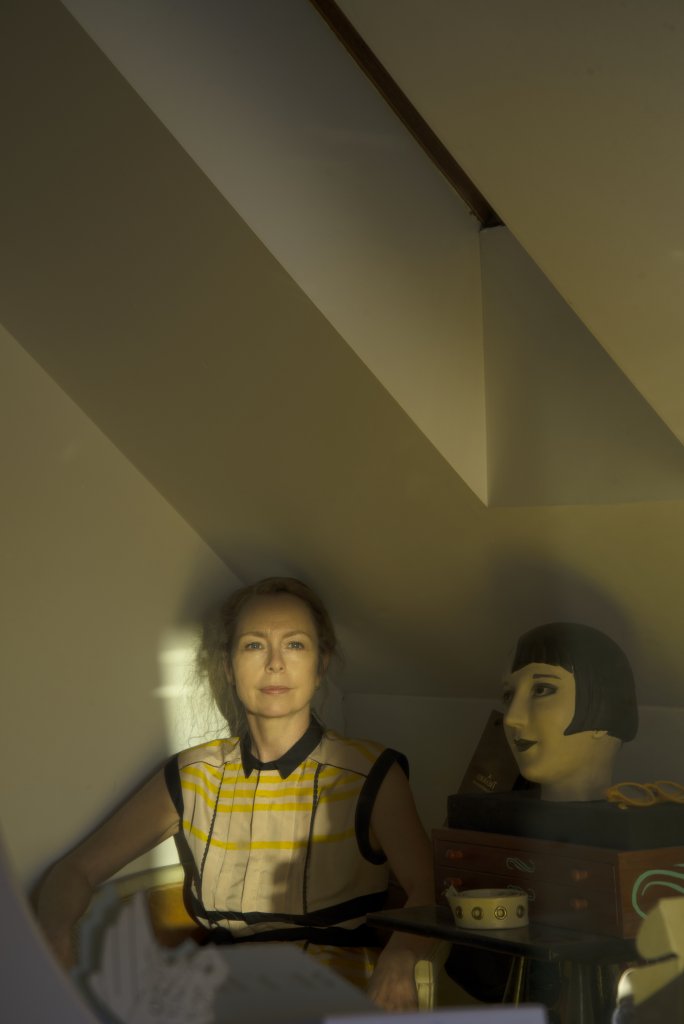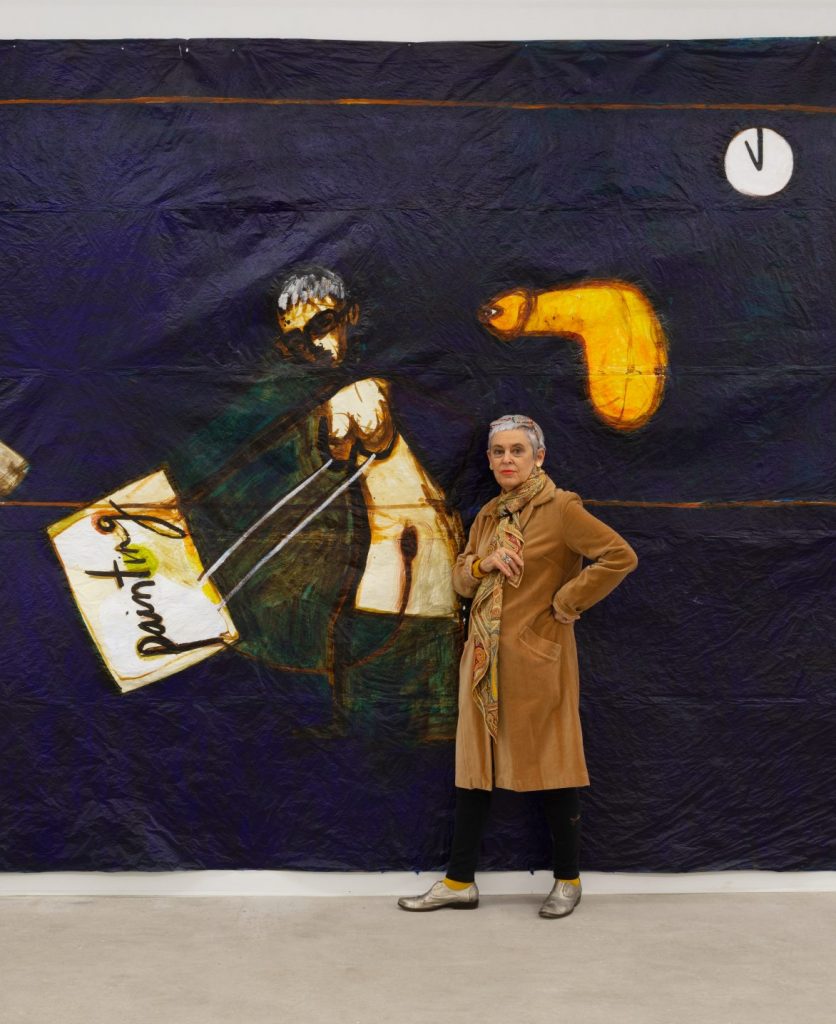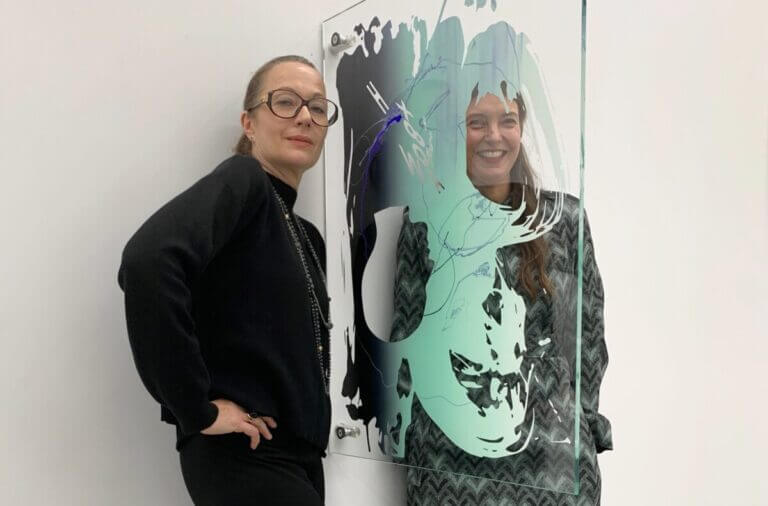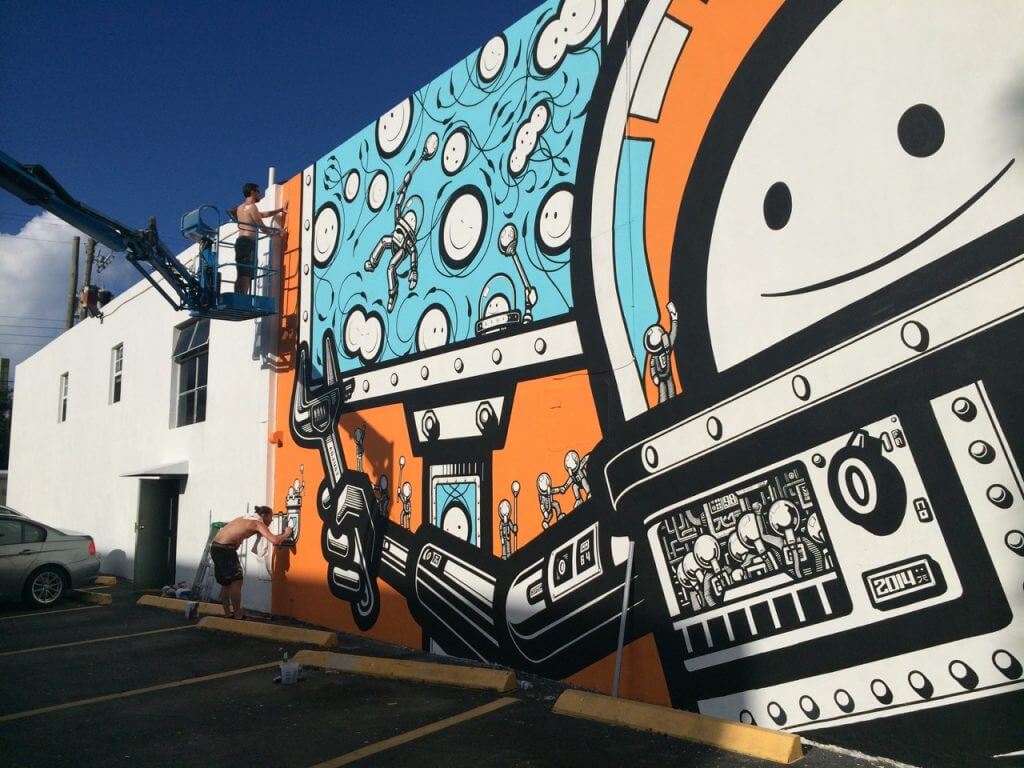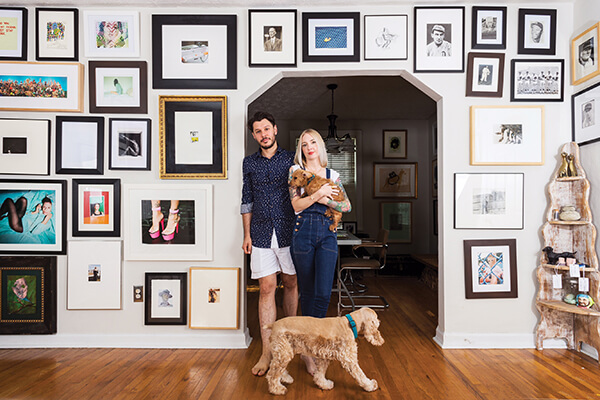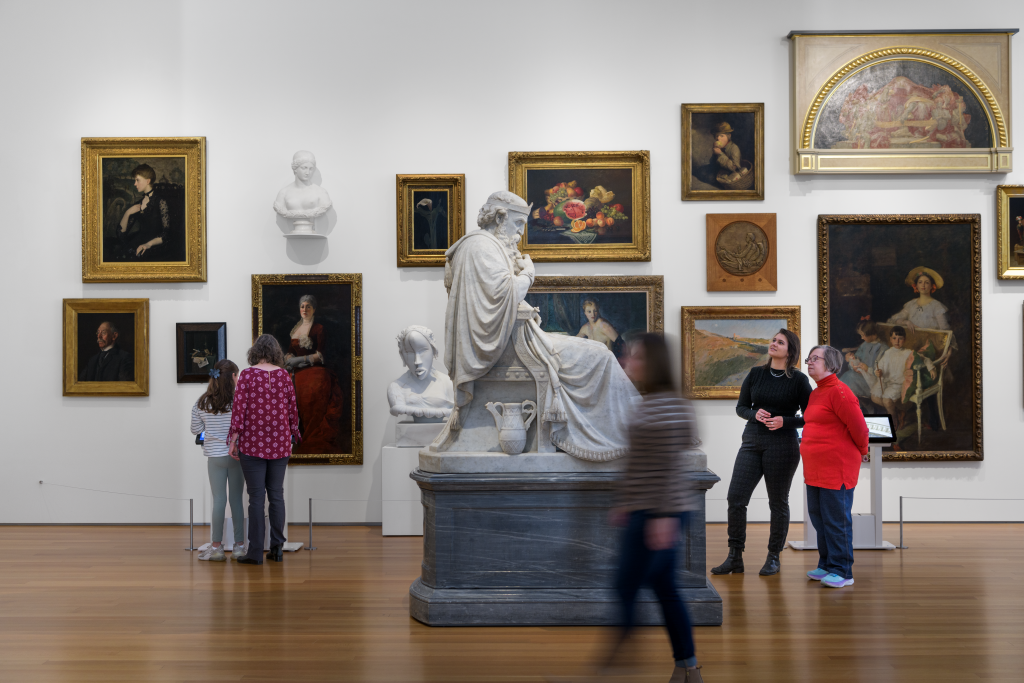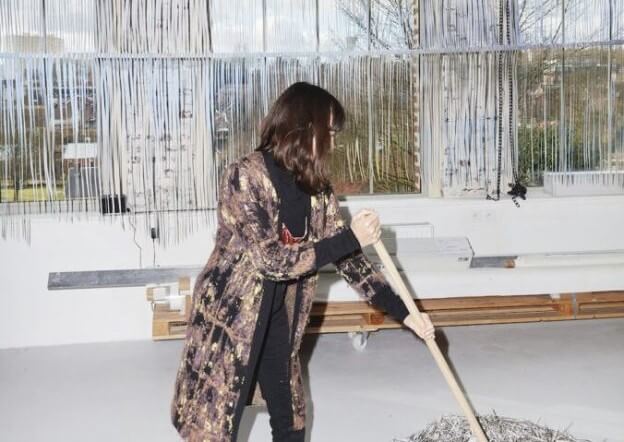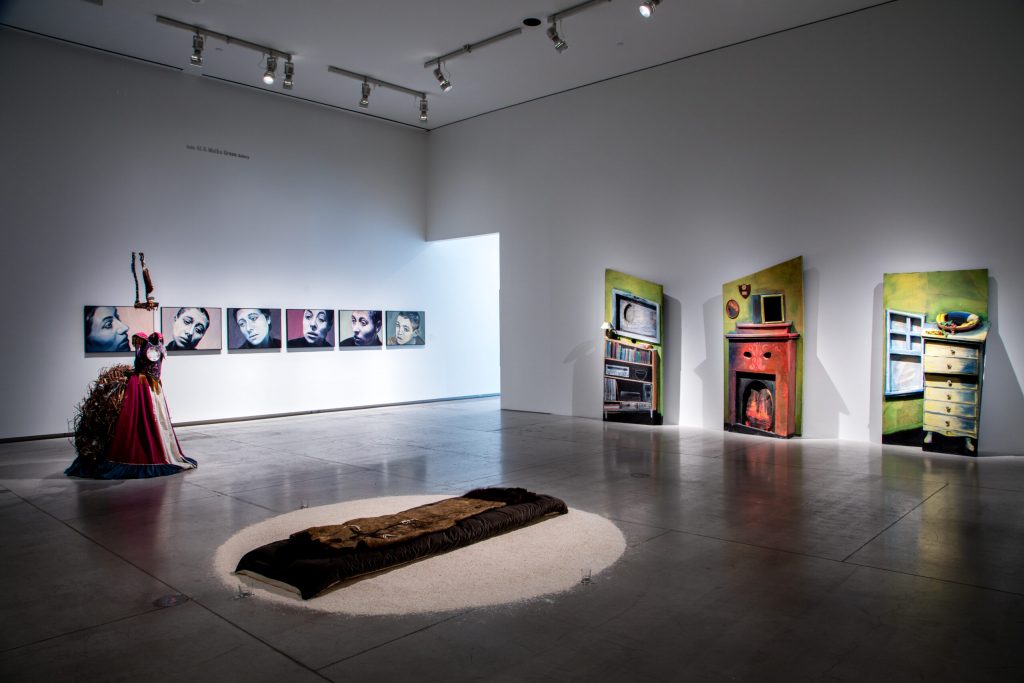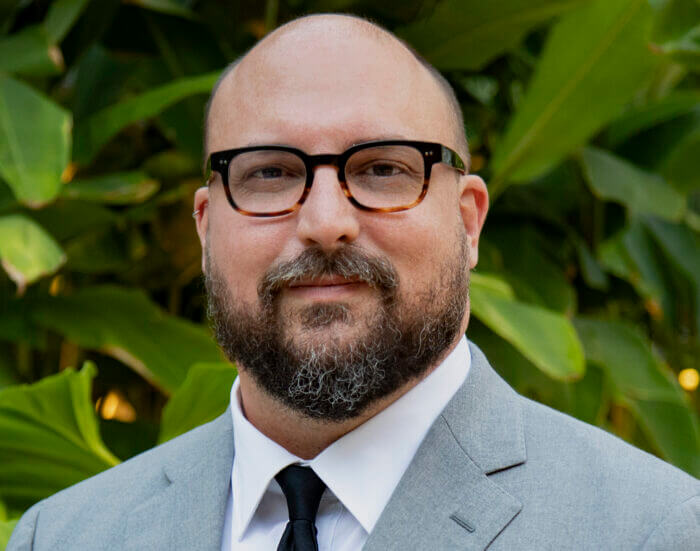A Q&A With Curator Anders Kreuger
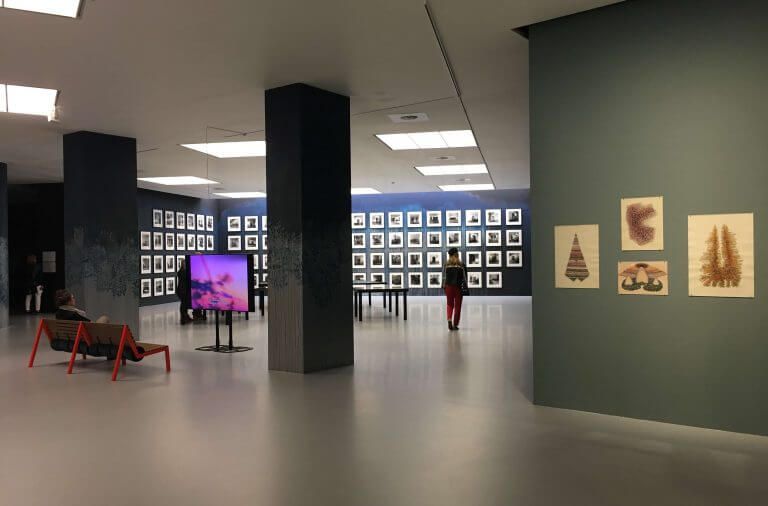
Anders Kreuger is the director of the Kohta Contemporary Art Kunsthalle in Helsinki, Finland. After completing his studies, he worked as a cultural ambassador to Lithuania for the Nordic Council of Ministers before founding the Nordic Institute for Contemporary Art. He served as director of the Malmö Art Academy (Sweden), and the Museum of Contemporary Art Antwerp (MHKA, Belgium). As well as working as an editor for the London-based Afterall journal, he has taught at institutions across Europe including the Royal Academy of Art (Copenhagen), and the RCA (London).

Nō taua tīruvi ra (A cause du Déluge – Because of the Flood), 2019
Acrylic mural at CAC (Contemporary Arts Center) Vilnius
Copyright Alexander Lee
Photo credit: Andrey Vasilenko
Let’s start with your background. I guess there are elements of it that we could call…unconventional for a curator of contemporary art?
Certainly, I am of a generation of curators that did not train to be curators. Most of my colleagues my own age studied different things at university and it’s just been a case of one thing into another to get here. For me, I was studying art history, languages, politics, all sorts – but I picked Lithuanian as a language to study because it was both an unusual choice and, at the time, I thought it would be the most useless thing I could learn. Coming out of university, though, I was one of the few people in Sweden in the 80s who could speak Lithuanian, so my first job ended up being the representative in Vilnius for the Nordic Council of Ministers as an expert and interpreter. It was my job for four years to organise the cultural exchange between the Nordic countries and Lithuania.
So, early on there’s this connection forged with a specific part of the world. To you, what is it that makes Lithuania’s cultural output special or unique?
My connection with Lithuania goes all the way back to 1987, which means I’ve got a lot of long-term friendships there and there’s this personal connection. I still hold citizenship there and continue to do a lot of research and exhibitions centred around the country. It’s a very interesting country that has not only managed to restore its pre-war independence but also to reinvent itself in the wake of that. There are certainly limitations and historical problems there, but it is a very forward-looking country – so it’s no coincidence that its contemporary art is so highly appreciated. Their pavilion winning the Golden Lion in Venice last year was well deserved.

Anne-Mie Van Kerckhoven
Basic (1980)
Courtesy the artist and Zeno X Gallery, Antwerp
Photo credit: Anders Kreuger
What is the role of art there, and what part do you feel you had in getting it out into the world?
The artists in Lithuania are very well-integrated and they had a very specific take and role in the reinvention that occurred. I had some role in that, but I’d say what I did was stay connected to the country after I left and continue to work with artists from there as often as I can. Because I’m fluent in the language, it’s easier for me to make that first connection especially with young artists. It’s a difficult language – its grammar is one of the most archaic still spoken, almost like Homeric Greek. But its vocabulary was pretty much invented in the 20th century, which inspires this intriguing mix of the old and the new that I think is very interesting.
Do you think that mix of old and new, that cross-generational dialogue, feeds into your work now at Kohta?
Every institution has its philosophy and working programme, and certainly at Kohta it’s been our mission to accommodate artists from all generations – our founders are in their 40s and 60s and they established this kunsthalle as they felt they could not get their work shown in other places. We often exhibit our founders’ work, in fact we have a show from Nina Roos due to start next. But we strive to show art from people as young as their 20s up to people in their 70s, as well as reaching all across the world. My particular focus is looking at the neighbouring geographic areas like the Baltic region, as well as Russia. Finland has been at war with Russia many times so there isn’t that cultural closeness which I think could be very productive.
Our general ethos is to make sure we are putting across a mixture – generations, geography and medium. I see us as a good complement to the institutions in Helsinki that have to focus on big shows and visitor numbers as we can be the balancing-out factor that shows more introspective shows or smaller productions. For example, we brought a single piece by Emily Wardill to exhibit in Finland for the first time last year. This is part of the variety we offer – we’re not driven by an imperative to bring in the hundreds and thousands of people.
Education was a fairly crucial part of your career for a while. What was your experience with that, and why did you choose to step away from teaching?
There was a point around fifteen years ago when I was between London and the Nordic countries and teaching was very integrated into what I was doing. What I was doing at the RCA in London was helping to supervise their programme when they were getting this influx of funding that you would never see for the arts these days. It was very integrated so I would do exhibitions with the students that used more non-art components and research-based materials with archive photos and text detours.
I decided to stop teaching because I was getting tired of the power dynamic between myself and my students. You couldn’t have those qualitative conversations with young people like you could as a curator. I think it’s important to have a complex professional relationship with younger people so you can reach a material understanding – but that’s out of balance as a teacher when you’re personally responsible for their grades and wellbeing.

Co-curated with Dr. Maya Van Leemput
Left to right: Alexander Lee, Te fanau’a ‘una’una nā te Tumu: The Sentinels (2017)
Simryn Gill, My Own Private Angkor (2007–2009); Michel Auder, Voyage to the Center of the Phone Lines (1993)
Izmail Efimov, from the series Etnostruktura (Ethno-Structure), 1993–1997
Courtesy the artists and Tracy Williams Ltd, New York (Gill) and Martos Gallery, New York (Auder)
Photo credit: Anders Kreuger
So, how did those relationships improve when you went back to curating rather than teaching these younger artists?
When I went to Antwerp, I curated an exhibition with young artists from all over the world called Don’t You Know Who I Am. It was based around identity politics and showed artists that may not have otherwise got a showing – they were from all kinds of countries and I got to do a lot of research on that. One of them was Aslan Goisum, a Chechen artist who was 25 at the time. I’m still working with him now and, because of that show, I was able to build that long-term working relationship.
The biggest shift at the moment has been the coronavirus pandemic – forcing us all online. A lot of reaction has been increasingly text-based content, which I can imagine appeals to you as an experienced writer and editor. How has Kohta shifted?
Luckily, we were already putting a lot of work into our online presence to improve it as the world was going more online anyway. My colleagues and I have spent a lot of time in quarantine editing content with information about our previous exhibitions and just getting used to the web medium as a publishing tool. Now, we’re publishing a series of essays by myself and the artists we have worked with and will be exhibiting. Really, we’re looking to use the Kohta website as a journal, which means I can draw from my work on Afterall. It’s a bit early to go into detail, but we’re looking at a series of about six or seven essays right now that look at how to shift exhibitions online without falling into those virtual reality games.
What has been your practical experience with lockdown, and what ripple effects are you seeing as it starts to ease off?
Well, I was sick right at the beginning. I had most of the symptoms and really severe headaches, but I came out of that a long time ago. Kohta started to reopen to the public on 2 June along with other galleries in Finland because we seemed to manage quite well here – it strikes me that it was the former empires that struggled to get the virus under control, because projecting power onto a problem like they usually do is not the way to solve anything.
Now we’re looking to keep our current exhibitions running over the summer. We unfortunately had to cancel an exchange with Hong Kong where we would have shown traditional textiles from the kingdom of Tonga as the materials couldn’t be brought over. We’ve got a diverse run of essays coming out. It’s hard to tell whether we’re facing a semi-permanent cocooning now, which would impact our ability to exhibit – but equally, my practice recently has seen me trying to figure out that combination of text and image for effective online material. It’s forced me out of the physical space so I can focus more on giving that content real depth and still provide something worthwhile for people who would visit us in normal circumstances.

